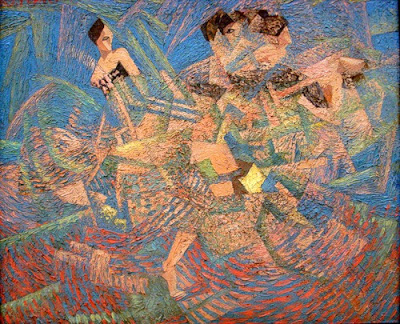
The French novelist
Sidonie-Gabrielle Colette (1873 -1954), known as Colette, lived life to the full in
Fin de Siecle Paris, a period described by her biographer as ‘the era of cranks and seances. Alchemists have their followings. So do
Krafft-Ebing and
Sacher-Masoch. It is chic to have a violent or perverse death... The ranks of Gomorrah swell with the wives of bankers and politicians, as well as with the cabaret singers and laundresses of
Montmartre. Like everyone else,
Schwob provides himself with an exotic servant and an opium pipe. Like everyone else,
Judith Gauthier embraces the Orient and takes a female lover. Wild animals, especially felines, become popular pets’.
In 1905, Colette began a lesbian affair with Mathilde
de Morny, known as Missy: ‘By the end of the year
Colette had formally entered
Lesbos on Missy’s arm. “With such insignia as a pleated shirtfront, a stiff collar, sometimes a waistcoat, and always with a silk pocket handkerchief, I frequented a dying society on the margins of all
societies”. There were discreet parties in
Neuilly to which the guests wore “long trousers and tuxedos”... There were clubs whose specialities were fondue and dancing, and cabarets where the blue haze of cigar smoke hung over a zinc bar and a contralto with a fake moustache sang Augusta Holmes. Mostly, there were late nights, curtained carriages, and opera cloaks that concealed the forbidden male attire. There was cruising in the
Bois between ten and noon, and on the Champs-
Elysees between four and dusk... There was a code of signs and gestures: a certain glance, a certain dog”.
In public, women's behaviour was sometimes tightly policed - for instance women were not allowed to wear men's clothes. In 1906 at a masked ball in Nice ‘when Colette began waltzing with a "svelte, supple
blonde" in a satin train, she felt an arm on her shoulder and heard the brusque voice of a bouncer advising them to "separate, if you please, ladies. It’s forbidden here for women to dance with each other’’'.
In January 1907, Collete caused a scandal when she performed at the
Moulin Rouge in a short dance piece called
Reve d’
Egypte. She played a mummy who ‘comes back to life in a jeweled bra, slowly and seductively unwinds her transparent wrappings, and at the climax of the dance, passionately embraces the archaeologist’ who discovered her – the latter role played by her cross dressing lover Missy. The
Moulin Rouge management hoped for a sensation when it opened and they got it – wealthy opponents filled the theatre with hired thugs and when the curtain opened ‘The stage was immediately bombarded with coins, orange peels, seat cushions, tins of candy, and cloves of garlic, while the catcalls, the blowing of noisemakers, and shouts of ‘Down with the
Dykes’ drowned out an orchestra of forty musicians... When the archaeologist took the unwrapped mummy in ‘his’ arms to give her a lingering and unfeigned kiss, the uproar reached a fever pitch’. The next night a man played the male part, by order of the police.
At the end of the First World War, Colette was still roaming the
streets of Paris looking for ‘new sensations’ in the company of her friend
Francis Carco: ‘He introduced Colette to those picturesque little clubs of the place
Pigalle where pimps, thugs and their molls danced the java to accordion music, and where the tables were bolted to the floor so that they
couldn’t be smashed up in the nightly brawls. Once says
Carco, he took Colette to a dive in the rue
de Lappe owned by Marcel Proust’s former valet. When the police made their usual entrance, swinging fists and nightsticks, the baroness
de Jouvenal [Colette] climbed on a table and shouted ‘Hooray! At last, a bit of fantasy’.
Source: Secrets of the Flesh: a life of Colette – Judith Thurman (London: Bloomsbury, 1999)











